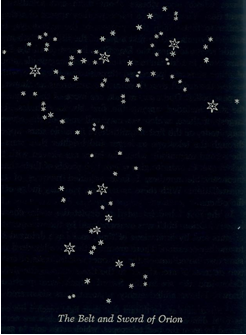- 1610: Galileo
- 1676: Ole Rømer
- 1687: Isaac Newton
- 1781: William Herschel
- 1838: Friedrich Bessel
- 1861: William and Margaret Huggins
- 1912: Henrietta Leavitt
- 1917 Einstein
- 1920: Harlow Shapley
- 1929 Edwin Hubble
- 1948: Ralph Alpher
- 1949: Fred Hoyle
- 1963: Maarten Schmidt
- 1964: Arno Penzias and Robert Wilson
- 1978: Vera Rubin and Kent Ford
- 1989: Margaret Geller and John Huchra
- 1992: John Mather and George Smoot
- 1995: Robert Williams
- 1998: Saul Perlmutter and Brian Schmidt
- 2010: Wendy Freedman
Galileo saw countless stars
 “I had intended to depict the entire constellation of Orion, but I was overwhelmed by the vast quantity of stars and by the limitations of time, so I have deferred this to another occasion. There are more than 500 stars distributed among the old ones within limits of one or two degrees of arc… I have observed the nature and the material of the Milky Way… The galaxy is, in fact, nothing but a congeries of innumerable stars grouped together in clusters… And what is even more remarkable, the stars which have been called “nebulous” by every astronomer to this time turn out to be groups of very small stars arranged in a wonderful manner.”
“I had intended to depict the entire constellation of Orion, but I was overwhelmed by the vast quantity of stars and by the limitations of time, so I have deferred this to another occasion. There are more than 500 stars distributed among the old ones within limits of one or two degrees of arc… I have observed the nature and the material of the Milky Way… The galaxy is, in fact, nothing but a congeries of innumerable stars grouped together in clusters… And what is even more remarkable, the stars which have been called “nebulous” by every astronomer to this time turn out to be groups of very small stars arranged in a wonderful manner.”
— drawing and quote from The Sidereal Messenger by Galileo Galilei, 1610